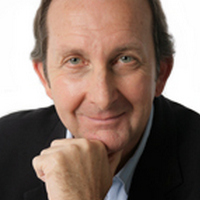

As we learn that one in 10 Australians admit that they have the debt collector chasing them and 3.2 million of us are one kick in the pants away from homelessness, you have to wonder what happens if the Reserve Bank agrees with the increasing number of economists who say our first rate-cut might not come until May.
This would not only be a social problem of epic proportions but could be a deathly political problem for the Albanese Government as the upcoming election is expected also to be in May.
As I pondered debt problems, homelessness and the rate cut that never comes, I thought about a friend who has been worriedly asking me when rates will be cut for over the past year but is now overseas and she flew premium economy!
There is a mismatch between her home loan repayment misery with high interest rates and the fact that she can holiday OS in the lap of relative luxury. Of course, I am happy for her but as an economist it makes me ask, has the Reserve Bank actually created the circumstances that means inflation has fallen slowly and rate cuts are a long time coming.
If my friend was suffering more, she would not be in London and she’d be cutting back on spending to help inflation fall to push down interest rates.
In Michele Bullocks first speech after becoming Governor, the AFR’s Anthony McDonald reported the following: “She reiterated that the RBA board has ‘low tolerance’ for allowing inflation to return to its 2 per cent to 3 per cent targeted range slower than expected, even if there are some signs of pain building in the economy.”
The RBA has not raised the cash rate since Cup Day last year and while I was not in favour of more hikes, it looks like our central bank has erred in being too nice to borrowers. Of course, if the Treasurer had not been kind enough to give tax cuts to low- and middle-income Aussies that might have hurt the economy enough to bring down inflation and interest rates. However, the fact is both Bullock and Chalmers needed to be cruel to be kind, if lower interest rates were to happen before now.
After decades of economics commentary on the RBA and Treasury, inflation only gets burnt out by tough policies, which can put an economy in or close to a recession. The facts are we have avoided this scary outcome with unemployment anchored at or around 4.1% for six of the past 12 months, as the chart below shows.
Unemployment

If the RBA really wanted to exterminate inflation quickly it would have raised the cash rate over 5%, like most of the countries that now are seeing rate cuts. I wouldn’t have liked it but it’s not my job to set interest rates to kill inflation, it is the work of Ms Bullock, aided and abetted by the Treasurer.
The bottom line is that the RBA has not gone all-in to beat inflation and while statements suggest it is totally committed to beating inflation, the fact is that they have a dual goal as this Statement of Monetary Policy bluntly states: “The Reserve Bank Board sets monetary policy to achieve its objectives of both price stability and full employment.”
Right now, it is doing a great job on employment but a second-rate effort on bringing prices down. However, history shows if you beat inflation effectively, ordinarily unemployment spikes and so it’s fair to say, the RBA has failed the inflation-beating test but has a pass for addressing its dual goal lowering price rises, albeit slowly, while not smashing the job market.
Of course, if rates had risen faster there would have been more negative implications for struggling debtors and the homeless.
The Daily Telegraph has looked at both subjects are here are the main findings:
For those hoping for rate cuts to end this misery, the RBA is not only holding out on rate cuts but has effectively told us that prices and rents will not being going back to pre-Covid levels. The central bank does not want deflation — which goes with a deep recession and brings lower prices. Instead, Bullock wants disinflation which means inflation rises but by lesser amounts, while remaining under 3%.
Of course, if governments were more committed to providing more housing, rents would fall but both state and federal governments have been populated by politicians who pay lip service to our housing supply problem.
Finding politicians who really care about solving our housing crisis is what is needed for that challenge, while to get interest rates down we might need Ms Bullock to be crueller to be kinder to those praying for rate cuts.
In the heartless world of economics, the economist would say raise interest rates to get rates to fall ASAP. This is why economics is sometimes called the “dismal science”.
Anyone wanting to shoot me for this conclusion, remember I am only the messenger!